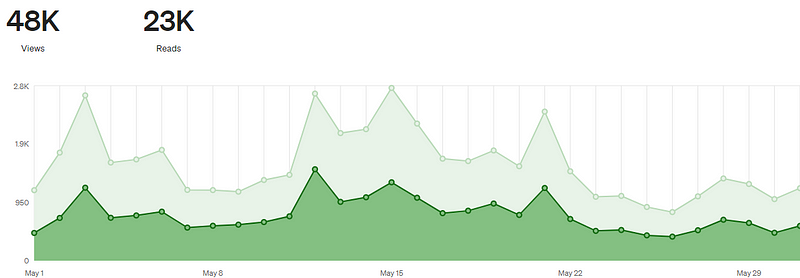Unraveling Atherosclerosis in Werner Syndrome Patients
Written on

Introduction to the Study
Atherosclerosis is a significant health concern, and this article presents findings from a recent study published in Nature Communications on June 10, 2024. This research focuses on the mechanisms of vascular aging and cardiovascular diseases in patients with Werner Syndrome (WS) by employing induced pluripotent stem cells (iPSCs) to create human myeloid and vascular cells. The researchers established an in vitro model to explore atherosclerosis at the molecular level.
Myeloid cells, a vital component of the immune system derived from hematopoietic stem cells in the bone marrow, include various types such as macrophages, neutrophils, eosinophils, basophils, and dendritic cells. Vascular cells, comprising endothelial and smooth muscle cells, form the structure of blood vessels and are crucial for maintaining proper blood circulation.
Both myeloid and vascular cells are essential in preventing atherosclerosis. Myeloid cells contribute to immune defense, while vascular cells uphold blood flow and vessel integrity. For a deeper dive into atherosclerosis, refer to the detailed article by Dr. Yildiz.
Research Findings
In this study, researchers utilized iPSCs from both WS patients and healthy individuals to differentiate key cells implicated in atherosclerosis: macrophages, vascular endothelial cells, and vascular smooth muscle cells. They analyzed the characteristics of these cells and their responses to various stimuli, including co-culturing macrophages with vascular endothelial cells and smooth muscle cells.
Understanding Werner Syndrome
Werner Syndrome is a rare genetic disorder marked by accelerated aging of tissues and organs. Patients typically exhibit signs of premature aging in their twenties, such as graying hair, cataracts, and heightened susceptibility to age-related diseases like diabetes, osteoporosis, and atherosclerosis. The disorder is linked to mutations in the WRN gene, which is vital for DNA repair and maintenance, leading to a reduced lifespan and earlier onset of age-related health challenges.
Summary of Key Findings
This research, available through the provided link, offers valuable insights into how WS cells contribute to atherosclerosis, independent of other risk factors, and identifies possible therapeutic targets.
- Inflammation and Cellular Aging: WS myeloid cells (WS-iM?s) exhibited increased inflammation and accelerated aging, primarily due to enhanced type I interferon (IFN) signaling and reduced accessibility of essential transcription factor binding sites. Correcting one allele of the WRN gene in these cells alleviated these issues.
- Nucleic Acid Sensing Pathway Activation: WS-iM?s released double-stranded RNA (dsRNA) into the cytosol, triggering a nucleic acid sensing pathway that resulted in type I IFN signaling, causing inflammation and cellular aging. Corrected WS cells (gcWS-iM?s) showed diminished dsRNA accumulation, inflammation, and aging.
- Impact of Type I IFN Signaling on Atherosclerosis: Type I IFN signaling, typically activated by viral infections or nucleic acids, was found to be upregulated in WS-iM?s even in the absence of pathogens, leading to cellular aging and growth arrest.
- Role of Retrotransposable Elements (RTEs): Dysregulated RTE expression in WS cells correlated with heightened inflammation and cellular aging, with lower levels of H3K9me3 indicating alterations in chromatin structure.
- Therapeutic Implications: Targeting type I IFN signaling or rectifying the WRN gene may reduce inflammation and atherosclerosis in WS patients, presenting a promising strategy for addressing cardiovascular concerns in this population.
Dr. Naoya Takayama, the lead author of the study, emphasized the significance of this research: “We could successfully observe the interactions between immune cells and vascular cells with a uniform genetic background using our new culture technique. Hopefully, it will facilitate the development of effective drugs against atherosclerosis.”
About Dr. Naoya Takayama
Dr. Naoya Takayama serves as an Associate Professor at the Graduate School of Medicine, Chiba University, Japan. His research centers on stem cell biology and the development of innovative analytical techniques to understand disease mechanisms. He has authored approximately 50 peer-reviewed articles, cited over 5,400 times, in esteemed journals such as Cell Stem Cell, Blood, Nature Communications, and more.
Conclusions
This pioneering study enhances our understanding of atherosclerosis mechanisms in Werner Syndrome, highlighting the interplay between inflammation and cellular aging. By utilizing iPSCs to derive key vascular and immune cells from WS patients, the researchers have identified potential therapeutic targets for alleviating cardiovascular challenges associated with WS.
The findings underscore that WS cells display increased inflammation and accelerated aging due to heightened type I IFN signaling. Interventions targeting this pathway or correcting the WRN gene may offer strategies to mitigate inflammation and atherosclerosis in WS patients.
This innovative use of iPSCs to explore cellular interactions in vitro provides a robust framework for investigating complex diseases at a molecular level. Atherosclerosis affects millions globally, leading to severe health consequences such as heart attacks and strokes. This research opens new avenues for developing treatments that may benefit all individuals suffering from atherosclerosis, not just those with WS.
Keeping abreast of the latest research on genetic disorders and their implications for cardiovascular health is vital. Clinicians should also prioritize educating patients and the public about the significance of genetic research in developing new treatments for age-related conditions.
Understanding genetic diseases like WS through innovative research will pave the way for novel treatments, enhancing the quality of life for those impacted by such disorders.
Thank you for engaging with this exploration of the study. Wishing you health and longevity.
If you write about health and science, you are welcome to join my publication. Here is the link to the initial submission guidelines. Here is a sample of how I curate stories from the Health & Science publication on Medium.com. Top 10 Stories Published on Health & Science Publication for Friends of Medium
Uplifting Update on My New Publication
My new publication, Health and Science, is gaining momentum, mirroring the success of its predecessor, ILLUMINATION. My first newsletter garnered thousands of views in May 2024. Here’s the dashboard for verification.

Feel free to explore the details from my first newsletter.
Exciting Developments in My Health and Science Publication
As the owner and chief editor, I am thrilled to share the rapid growth of this specialized publication, founded on core values of promoting health science research.
Recently, I introduced three writers contributing to Health and Science. Let's offer support to Dr. Adam Tabriz, Naya Monroe, MA, LCDC-I, and Lawson Wallace.
Meet the Contributors
- Dr. Adam Tabriz, MD: A dedicated contributor on Health & Science publication of ILLUMINATION.
- Naya Monroe: A postgraduate researcher specializing in behavioral and mental healthcare.
- Lawson Wallace: A multifaceted YouTuber, freelancer, writer, editor, and community supporter.
I also curate stories from ILLUMINATION publications. Check out the latest edition for an eclectic mix of topics.
Mike’s Favorite Stories on ILLUMINATION Publications — #130
About Me
I am a retired scientist in my mid-70s, inspired by my grandchildren to write on this platform. As a volunteer editor for Illumination publications, I support emerging writers. I welcome the opportunity to read, publish, and promote your stories. Connect with me on LinkedIn, Twitter, and Quora, where I share insights from my readings. Subscribe to my account to receive updates on my posts.